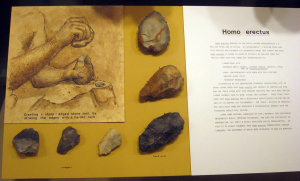Cate Russell-Cole's Blog, page 31
August 15, 2013
The impossible drive for Perfection. Is it really worth it?



Are you a perfectionist?
Do you have to have everything done yesterday?
Is it your mission in life to achieve everything possible and then some?
It is somewhat embarrassing for me to admit that I would most certainly answer 'yes' to all of these questions and whilst you could argue that these qualities give me drive, determination and ambition they could also be argued to be equally as detrimental.
As I just said to Jade: my reblog button finger is twitching. This message needs shouting from the rooftops! This is life-saving wisdom.
Nothing is Too Crazy to Write!

“For the author Margaret Atwood, it’s not a question of sitting around and wondering what to write; it’s a question of deciding which of the “far-fetched and absurd” ideas she’s going to try to tackle.” I love that! You can follow Margaret on Twitter: @MargaretAtwood and beware her correct advice: whatever you say online on Twitter or on a blog is “published.” It can come back at you. Discretion is wise.
Margaret’s Biography from http://www.margaretatwood.ca“Throughout her writing career, Margaret Atwood has received numerous awards and honourary degrees. She is the author of more than fifty volumes of poetry, children’s literature, fiction, and non-fiction and is perhaps best known for her novels, which include The Edible Woman (1970), The Handmaid’s Tale (1983), The Robber Bride(1994), Alias Grace(1996), and The Blind Assassin, which won the prestigious Booker Prize in 2000. Atwood’s dystopic novel, Oryx and Crake, was published in 2003. The Tent (mini-fictions) and Moral Disorder(short stories) both appeared in 2006. Her most recent volume of poetry, The Door, was published in 2007. Her non-fiction book, Payback: Debt and the Shadow Side of Wealth, part of the Massey Lecture series, appeared in 2008, and her most recent novel, The Year of the Flood, in the autumn of 2009. Ms. Atwood’s work has been published in more than forty languages, including Farsi, Japanese, Turkish, Finnish, Korean, Icelandic and Estonian. In 2004 she co-invented the Long Pen TM.”
Filed under: "Dose of Inspiration" Video Tagged: author, books, characterisation, creativity, fiction, goals, ideas, Indie publishing, inspiration, Margaret Atwood, resource, success, Twitter, writer, writing







August 13, 2013
The Presumption of Stupidity: A Warning About Old Research Sources

Images in this post are from http://www.flickr.com/photos/hmnh/ under a Creative Commons Licence. Photos were taken at the Cleveland Museum of Natural History. This post does not comment on their views. I haven’t been there, I am just using the images.
Textbooks are expensive and as a researching writer, I rely heavily on old library books for information. I have recently learnt to be wary. The age of a publication can work against you.
Beware of any books written who have based their work on old theories or fads that were popular at the time. Mindsets change. If you want to know about any area, look for recent research. As technology has improved across every discipline, new insights into old ideas have been gained and some old text books, especially medical, are now only fit for fuelling bonfires. It’s sad for the authors, but essential progress.
Take the representation of the Neanderthals as an example. Just because they looked different, used stone tools, didn’t own an iPhone and didn’t attend University, they have often been pictured as simple minded, primitive savages. Much study has been done on bones, head sizes etc., and theories developed which have become the basis of an image which may not stand up to modern ideas, objective scrutiny or logic. Science relies on individual brains and no one thinks with a completely clear head; plus we tend to go with the first viable ideas put to us.
Think about it deeper: for anyone to survive in the wild with no decent weapons, no technology, no health care and no formal education, they were probably smarter than us! It is one thing to follow along with the herd, another thing altogether to design a herd and make it work from scratch. That takes the sophisticated qualities of reasoning, problem solving, planning, adaption from trial and error and considerable courage and determination. Neanderthals may look odd and be hairy, but they weren’t stupid. Plus they now know that the Neanderthals had better tools than we did.
People have an unwarranted tendency to belittle people they don’t understand. It leads to inaccurate conclusions and in some cases, racism. When people groups such as the Neanderthals have died out, it is even easier to lean heavily on negative assumptions and brand them as brainless.
So when you’re researching, think deeper than what’s presented to you. When you’re writing about any people / aliens / places, consider the theories later generations or explorers form about them. They may be correct; they may be racist; they may be based on scant evidence and have no solid foundations. There are many plot possibilities you can weave between the truth and inaccuracies.
Read widely and it will give you a wealth of inspiration.
This article / blog post is Copyright Cate Russell-Cole 2013. All rights are reserved Internationally. You may not reproduce it in any form, in part of whole, without Cate’s prior written permission. That includes usage in forms such as print, audio and digital imaging including pdf, jpg, png etc. A fee may be requested for re-using her work if it is for a commercial venture. Link sharing and Pinterest pins are most welcome as long as Cate is the attributed Author.
No images on this blog may be copied, captured, or altered for your own purpose without the consent of the originating owner.
Filed under: Writing Resources Tagged: accuracy, author, books, discovery, fantasy, history, ideas, inaccuracy, Neanderthal, problem solving, racism, research, science, science fiction, writer, writing







Defining Character-istics: The Right Shoes!
 Fire-engine red stiletto heels remind me of a blonde, bubbly friend who had an ambition to become a comedian. She had been through a life of mental illness and family abuse: she survived it through spirituality and humour. She wore those heels with panache! Yet, those shoes could tell so much more about her: raging extrovert is merely the obvious, small part of the message her stilettos shouted at me.
Fire-engine red stiletto heels remind me of a blonde, bubbly friend who had an ambition to become a comedian. She had been through a life of mental illness and family abuse: she survived it through spirituality and humour. She wore those heels with panache! Yet, those shoes could tell so much more about her: raging extrovert is merely the obvious, small part of the message her stilettos shouted at me.
When I saw this image on Facebook, I had a good laugh. I particularly liked one comment: “And I’d like to point out, these were no ordinary shoes – they were sparkly, red heels that complimented both blue gingham and striped tights. How often are you going to find shoes that do that?”
There is a pertinent reminder in that joke. The personal treasures we attribute to fictional characters speak as loudly as any aspect of their described physical appearance, emotional habits or dialogue. I knew someone else who only ever wore a pair of purple Doc Martin boots. She wore them everywhere, on every occasion: so great was her passion for those boots. We never discovered why, other than she had always wanted them and had saved up for months to buy them. I have always wondered if there was something else going on under that story.
 Choose the right shoes, and you’ll write in a character message your readers will never forget!
Choose the right shoes, and you’ll write in a character message your readers will never forget!
Note: Dorothy’s shoes from the Wizard of Oz are reputed to be valued at up to three million dollars. So to all the shoe-resenting husbands out there, they can be a great investment. Truly!
This article / blog post is Copyright Cate Russell-Cole 2013. All rights are reserved Internationally. You may not reproduce it in any form, in part of whole, without Cate’s prior written permission. That includes usage in forms such as print, audio and digital imaging including pdf, jpg, png etc. A fee may be requested for re-using her work if it is for a commercial venture. Link sharing and Pinterest pins are most welcome as long as Cate is the attributed Author.
No images on this blog may be copied, captured, or altered for your own purpose without the consent of the originating owner.
Filed under: Writing Resources Tagged: belonging, books, characterisation, characters, creativity, defining, Doc Martin boots, fiction, goals, ideas, Indie publishing, inspiration, Nanowrimo, novel, passion, personality, plot, possessions, shoes, stilettos, success, Wizard of Oz, writer, writing







August 12, 2013
Paradiso or Inferno? Writers on writing


Imre Kertesz (above) found writing an angst-ridden struggle but James Michener (below) relished every syllable
I’ve just started writing a new play after a fallow year spent licking my wounds when a promising commission failed to materialise into a theatrical production. I know, I’m too thin skinned; finding time to write has also been my greatest problem: when you work and have a family, time slips by before you know it.
If there is one thing authors need, it's reviews and many of them come from awesome book bloggers such as Dina. She has a great blog and this is a post worth reading. Please follow her and if you ask... she may feature you... you never know your luck. Thanks Dina!
August 11, 2013
Olde Worlde Words: Writing Inspiration
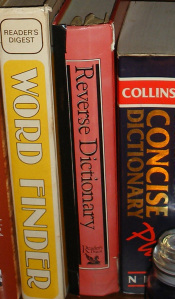 Are you ready to wrap your brain around new ideas? Here are your ‘uncommon word’ prompts for August and September. It’s your choice how to use them: whether as writing prompt topics, random idea generators to get unstuck, or you may wish to incorporate them into your work in progress to add extra colour. Most of them are driving my spell checker to a nervous breakdown!
Are you ready to wrap your brain around new ideas? Here are your ‘uncommon word’ prompts for August and September. It’s your choice how to use them: whether as writing prompt topics, random idea generators to get unstuck, or you may wish to incorporate them into your work in progress to add extra colour. Most of them are driving my spell checker to a nervous breakdown!
If you can’t use the word, you can benefit from the definition behind it. I am seeing a crime theme in this one! Please note that like this blog, all spelling is Australian.
Solatium: a sum of money paid over and above actual damages, as a solace for wounded feelings.
Zounds: exclamation expressing anger or wonder.
Ratiocinate: argumentative; carried on by a process of reasoning; logical; a process of deducing consequences from premises.
Wall-eye: an eye presenting little or no colour.
Lese-majesty: a crime committed against the Sovereign, or sovereign power of a state; treason.
Archimagus: a Chief Magician; a notable enchanter.
Higgle: to dispute in making a bargain; similar to haggle.
Thrasonical: given to bragging, boasting; ostentatious.
Wynd: a narrow lane or alley.
Galliard: lively, brisk, spruce: a brisk young fellow; a lively measure or dance.

From the Powerhouse Museum, Sydney
The words come from “Hoderns Home Dictionary: A Book of General Reference ETC. ETC… It is designed to meet a twofold want…” Thus you can tell how old the book is…
If any of these definitions don’t sound right to you, remember fashions and understandings dramatically change.
This blog post by Cate Russell-Cole is licensed under a Creative Commons Attribution-NonCommercial-ShareAlike 3.0 Unported License. You are free to share and adapt it.
Filed under: What's On, Writing Resources Tagged: author, creativity, dictionary, fiction, idea, inspiration, old world, prompt, resource, uncommon, Words, writer, writing







Finding the humanity in being a writer in the digital age
 Reblogged from Magic and Marvels:
Reblogged from Magic and Marvels:
“We write to taste life twice, in the moment and in retrospect.”
― Anaïs Nin
But what about in the fast paced world of the internet?
I blog therefore I am? Possibly. But I think there is more to it than that.
I like to read what other people write on their blogs and the interwebs in general. I love new ideas, perspectives, stories and such things keep my soul warm.
This is a great post. Please enjoy and follow Carrie at Magic and Marvels.
August 8, 2013
Seeing is Believing: Developing Characters in Unlikely Places

Character gathering has always been a hobby of mine, either by conversation technique, observation, or a combination of both. There is a certain skill attached to observing human behaviour and, I have found, being the cat-curious person I am, the perfect breeding grounds for observing everyday life and the creation of character fodder I use in my writings.
I use the plural ‘grounds’ because my sources are wide-ranging and differ greatly. Albeit they have one thing in common, and that is where potential subjects are usually so deep in thought as they go about their business, they haven’t a clue they are being observed, or for that matter overheard when they engage in occasional animated conversation.

By now you have probably guessed my sources of character inspiration. And yes, they are the mundane superstores where the world and its brother appear to drop their inhibitions and concentrate on the job in hand, totally oblivious of yours truly and others around them. Each is a vast coalface of quirky human mannerisms, ranging from the hilarious to verging on the pan-faced-robotic. And each a bottomless pit, deeper than an Abyssinian watering hole, of intrigue and curiosity. So whether it is the lowly ‘Pound Shop’ or Harrods, and everything in between, each has its own strata of humanity waiting to be mined and put to good use.
Time consuming you may say, but the weekly results meticulously filed away for future character formulation can lead to both imaginative and arresting storylines. Dickens had the knack of creating masterpieces involving characters with quirky, memorable names. Let’s face it; do you know anyone who has been sued by by Messrs Bumble or Fagin? So to negate libel action and still create a vivid image for your reader, avoid naming the person with a wooden leg, one eye and a propensity to spit a lot, Mister Smith. Because should a Mister Smith exist and display all these unfortunate attributes, your bank balance could take on a lighter shade of anthracite.
Humanity in abundance will always conceal a misfit displaying mannerisms before gone unnoticed, whether it be dress, behaviour, insobriety, deportment or the absurd.

Click on image to go to Rags’ Amazon Author page.
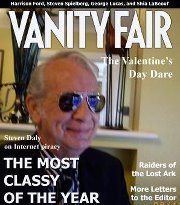 Meet Rags
Meet RagsRags Daniels was Born into a working class family, the second of four children, Salford 1944. He migrated South 1956. Wild and curious, he ran off to London, where he met the majority of the characters he writes about.
The swinging sixties and early seventies played a major roll in his insatiable thirst for adventure, and against a backdrop of mini-skirts, mod’s, rockers and Muhammad Ali, bore witness to an era of crazy fads, culminating in Britain’s first ever woman Prime Minister in 1979. And of whom Lord Acton said, ‘Absolute power corrupts absolutely, ’ and by the end of her era, Thatcher was case in point. And while the Nation paddled through rubbish, bodies unburied, strikes, power cuts, spiralling inflation, limited working weeks, abysmal production, etc, etc, the real money was going into the pockets of fraudulent corporate boards and City Yuppies. (Groomed to Kill), his first book was written against a backdrop of inner city poverty and tells of lad who became a government assassin.
Rags worked in Norway on timber frame construction, where he met John Millen, a naval architect who designed Pearl Harbour after the war. He became a ‘minder’ for his mother-in-law, both on and off his motor yacht in which he and his wife toured the world. Returning home, he then attended Brunel University and passed I.O.C.W.(GB)inc, exams. Rags started working with Borough Architects Dept.; resigned; got married and built his own house in South Devon while running several companies. He has also constructed a steel mill in India and a tiger compound in Nepal for the World Wildlife Trust.
When widowed, he returned to writing and investigative journalism… It is from his diaries of the 60’s and 70’s he wrote ‘Foxy Lady’, creating a fictional account of one such tale of political intrigue, and one for which he was interviewed by MI6. His latest book ‘Salford Sunrise’, is ready for publishing. And ‘Lallapaloosa’ is currently being scripted for the silver screen. He resides with his son, an A level English teacher, and Roxzan, his 13 year old adopted Granddaughter.
Follow Rags
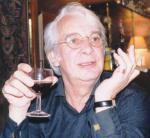 Zooty, his blog
Zooty, his blog
Google Plus
Goodreads
Amazon Author Page
Copyright Rags Daniels 2013. All rights are reserved Internationally. You may not reproduce it in any form, in part of whole, without prior written permission. That includes usage in forms such as print, audio and digital imaging including pdf, jpg, png etc. A fee may be requested for re-using this work if it is for a commercial venture. Link sharing and Pinterest pins are most welcome as long as Rags Daniels is the attributed Author.
No images on this blog may be copied, captured, or altered for your own purpose without the consent of the originating owner.
Filed under: "Writing Lessons from the Writing Life" Tagged: Amazon, author, books, characterisation, creativity, discovery, fiction, ideas, inspiration, Kindle, novel, plot, Rags Daniels, resource, writer, writing, Zooty







August 6, 2013
Writing About Shock and Trauma
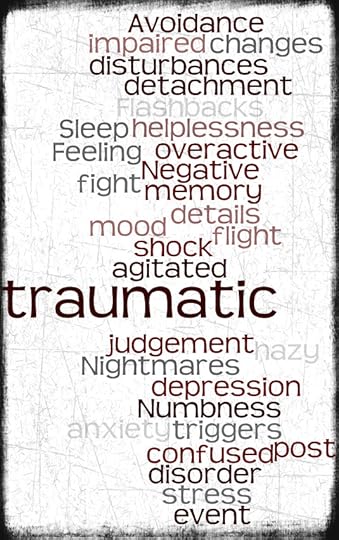 You are writing about the scene of a car crash. There is mangled metal, the Police and Paramedics are in attendance; but where is the driver of the car? Several blocks away, a dazed woman with blood on her forehead is wandering around, muttering about buying tissues. She doesn’t know what just happened. You are writing about a character who is experiencing psychological shock. This post is a basic introduction to psychological shock which will help you understand it, so you can use it effectively in your writing.
You are writing about the scene of a car crash. There is mangled metal, the Police and Paramedics are in attendance; but where is the driver of the car? Several blocks away, a dazed woman with blood on her forehead is wandering around, muttering about buying tissues. She doesn’t know what just happened. You are writing about a character who is experiencing psychological shock. This post is a basic introduction to psychological shock which will help you understand it, so you can use it effectively in your writing.
There are two types of shock. The first is the medical type that is a life threatening, sudden drop in the body’s blood pressure. It’s common in serious illness or injuries. That is not what I am referring to here.
Psychological shock is an acute stress reaction which people are thrust into because of a sudden trauma, such as a car accident; death of a loved one; becoming a victim of crime; being caught in a natural disaster: any incident which causes distress by way of inducing fear, emotional pain or severe mental stress. As a writer, if you have taken your character/s through an experience which would trigger shock, how they react to the shock over time, can be woven into your plot and character development.
Shock is actually not the correct clinical term. Mental health professionals refer to it as ‘acute distress disorder.’ If it doesn’t resolve itself within four weeks of the event, it can become a long-term, crippling psychological problem. Once it becomes a chronic problem, shock may evolve into a serious anxiety disorder such as clinical depression, or post traumatic stress disorder.

Image purchased from iStockphoto.com It may NOT be reused for any reason unless you purchase it yourself.
How people react to serious incidents depends on the actual person. Not everyone experiences a profound reaction. Some will respond with a fight or flight response where they are hyped up and prepared to survive in any way they can. Some people look for a rescuer so they don’t have to deal with the situation. Others can shut down, not knowing how to cope. In very simple terms, the emotions go into overload and the subconscious mind decides that the best way to cope is to deal with it later, or not at all. They are experiencing helplessness and unconsciously, they decide that running or fighting is simply useless. It is a reaction, not an action.
Someone with resilience; high self-esteem; a survival mentality; or who is used to taking a leadership role, is more likely to experience a fight or flight response. However, if they are ill, burnt out, discouraged, fatigued or the trauma is outside of their experience to the point where they have no idea how to act, they may slip into this state. That may provide you with an Achilles heel or strong character contrast which you can use to expand the reader’s understanding of the character.
Psychological shock can show up as a series of physical symptoms as well as mental ones. It may involve:
Feeling confused;
Numbness and detachment from people and surroundings;
Inability to remember the traumatic event which has occurred, or only remembering hazy details;
Some people may become agitated and overactive;
Inability to make decisions, at times even simple ones; and
Impaired judgement.
Longer term symptoms can include:
Sleep disturbances;
Negative changes in the person’s normal mood;
Avoidance of memory triggers;
Flashbacks
Flashbacks and nightmares serve to bring back the traumatic memories that the mind just doesn’t want to address. It is an internal healing mechanism that can be used to move the character out of trauma and into growth. Acknowledging their content and dealing with the underlying trauma has been seen to reduce flashbacks and nightmares. Continuing to push what happened away, may trap people in a cycle of mental horror.
As this is a broad and technical topic, a number of links have been embedded in this post to give you the information you need. So please, click on the red text to explore the area more fully. I could continue to write about panic attacks and other related issues, but the more you read, the more prompts your discovery will give you. As I have been saying in all these psychology based posts, if your comprehension of the way these emotional states work is accurate, you will write a work of fiction that is realistic and doesn’t take improbable shortcuts to a picture perfect ending. That adds credibility to your work which will foster your success as an author.
This is a free chapter from the ebook, “Building Emotionally Realistic Characters.”
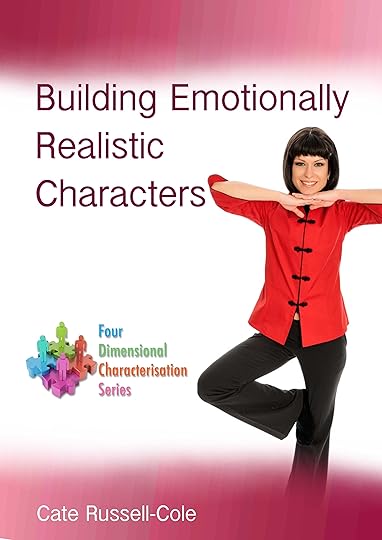 Whether you are writing fiction, memoir, poetry, short stories, plays, screenplays or music, the ability of your work to touch others depends on how they relate to the messages you are conveying. What they see and hear must be something they have encountered and can relate to easily; or it must be shared in another way they can grasp. Often that is done through the only common element every human being has: knowing what emotions feel like.
Whether you are writing fiction, memoir, poetry, short stories, plays, screenplays or music, the ability of your work to touch others depends on how they relate to the messages you are conveying. What they see and hear must be something they have encountered and can relate to easily; or it must be shared in another way they can grasp. Often that is done through the only common element every human being has: knowing what emotions feel like.
You can read a story about events which have never happened to you, but still laugh or cry over what is occurring with the characters. Why? Because you know what it is to experience pain, joy, fear, rejection, envy, fatigue, laughter, grief, ecstasy or doubt too. This is the magic that makes stories work. The tricky part, is conjuring up the right spell or your reader will not be fooled.
This e-book is a full of the incantations you need to bring your characters to life in a way that is emotionally realistic. There are no short cuts to “happily ever after” endings, which leave your plot line hollow and sounding fake. The book contains introductory level psychology which will give you an insight into how emotions and events weave us together into a whole or hurting person.
Topics include: change, motivation, healing emotional trauma, post traumatic growth, grief, shock, super-egos and inferiority, escapism, fatal flaws, phobias, shame, violence, character types, suicide prevention, schizophrenia and multiple personality disorder. This is the second book in the Four Dimensional Characterisation Series. ISBN 978-0-9873175-3-7 Out now on Amazon Kindle.
Please, no re-blogs of this post!
This article / blog post is Copyright Cate Russell-Cole 2012. All rights are reserved Internationally. You may not reproduce it in any form, in part of whole, without Cate’s prior written permission. That includes usage in forms such as print, audio and digital imaging including pdf, jpg, png etc. A fee may be requested for re-using her work if it is for a commercial venture. Link sharing and Pinterest pins are most welcome as long as Cate is the attributed Author.
No images on this blog may be copied, captured, or altered for your own purpose without the consent of the originating owner. Where images are marked as being iStockphoto.com images, they are paid for and licenced to Cate for use on this blog. If you take them, iStockphoto.com has the right to take legal action against you for Copyright Infringement.
Please see the Blog Content and Image Copyright page of this blog for further information in regards to Guest Posts, other images, Cate’s checks on infringements and Liability.
Filed under: Writing Resources Tagged: accident, author, books, characterisation, fiction, Indie publishing, inspiration, novel, plot, psychology, shock, stress management, symptoms, trauma, writer, writing







August 5, 2013
Supporting Memoir Writers: A New Initiative
 Many writing challenges are aimed at fiction writers, which leaves those of us who have a desire to write about our own lives, feeling left out. With this in mind, Kathy Pooler, Sherrey Meyer, Sharon Lippincott and myself have joined forces to develop a dedicated blog and writing challenge, specifically for memoir / life story writers.
Many writing challenges are aimed at fiction writers, which leaves those of us who have a desire to write about our own lives, feeling left out. With this in mind, Kathy Pooler, Sherrey Meyer, Sharon Lippincott and myself have joined forces to develop a dedicated blog and writing challenge, specifically for memoir / life story writers.
We are still ironing out the challenge details (due to commence next February, or if in demand, earlier), but in the meantime, we have set up the Write Your Life Story blog where you can meet the team, read book reviews, find new resource sites and discover more about how to write your life story. If you are a genealogist or are wanting to write the life story of a family member, much of the content will also be helpful for you.
When the challenge does commence, it will be a one month, low stress memory prompting challenge, which will only involve two short memory pieces to be written per week. The aim is to give you new ideas which you can use in your work, bring back forgotten memories and put you in touch with others who will inspire you and help you along your creative journey.
A community will be set up on Google Plus, so that if you don’t have a blog, you can add your work for the challenge prompts. That way, no one is left out. Hangouts will also be hosted for those who’d like to chat face to face.
 So please be patient with us as we iron out the details. It will take a few months to gain momentum, followers and gauge what people would like. Please follow the blog and keep an eye on the Write Your Life Story Facebook page for details. New blog posts will go there, and through my personal Twitter and Google Plus feeds.
So please be patient with us as we iron out the details. It will take a few months to gain momentum, followers and gauge what people would like. Please follow the blog and keep an eye on the Write Your Life Story Facebook page for details. New blog posts will go there, and through my personal Twitter and Google Plus feeds.
All feedback is welcome. Come and join in! Even if you think you’re only a fiction writer, you may find a change in genre will refresh your creativity and take you on a new, dynamic writing journey.
Filed under: Life Story / Memoir, What's On, Writing Resources Tagged: autobiography, blog, family history, Genealogy, Kathy Pooler, launch, life story, memoir, non-fiction, Sharon Lippincott, Sherrey Meyer, Write Your Life Story, writer, writing, Writing Challenge









